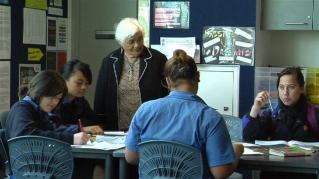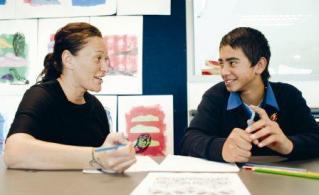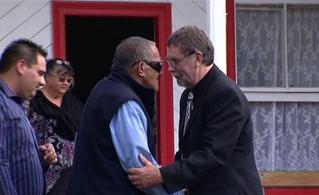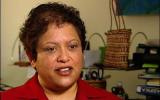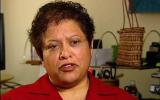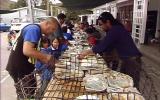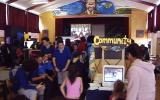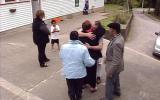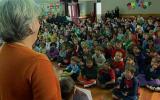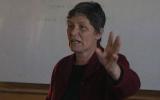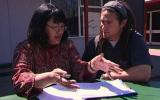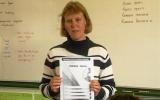Section navigation
Filter by result
leaders
-
Te Mana Kōrero: The way forward
 28/06/2011
28/06/2011
Filed under: Productive partnerships | Effective leaders
Keriana Tawhiwhirangi provides advice on how to initiate dialogue with whānau. (Extract from ‘Te ManaKōrero: Relationships for Learning’, 2007).
-
Te Mana Kōrero: The risks
 28/06/2011
28/06/2011
Filed under: Productive partnerships | Effective leaders
Keriana Tawhiwhirangi and Wally Penetito reflect on the risks inherent in failing to maintain productive partnerships with whānau. (Extract from ‘Te ManaKōrero: Relationships for Learning’, 2007).
-
The school in the community
 28/06/2011
28/06/2011
Filed under: Productive partnerships | Effective leaders
It’s not enough to invite the community to come to you - you have to go into the community. At Hiruharama School, every Friday senior students, the principal and whānau are involved in the delivery of meals-on-wheels to the kuia and kaumatua in the area. (Extract from ‘Te ManaKōrero: Relationships for Learning’, 2007).
-
Active partnerships in the community
 28/06/2011
28/06/2011
Filed under: Productive partnerships | Effective leaders | Effective teachers
A regional example of celebration of student learning with their community is the annual Nati awards on the East Coast of the North Island. (Extract from ‘Te ManaKōrero: Relationships for Learning’, 2007).
-
Whānau involvement
 28/06/2011
28/06/2011
Filed under: Productive partnerships | Effective leaders
The need for whānau involvement does not diminish as students advance through schooling, and schools need to ensure their relationships with whānau extend beyond the immediate family. Regular communication is key. (Extract from ‘Te Mana Kōrero: Relationships for Learning’, 2007).
-
Whānau involvement at Hiruharama School
 28/06/2011
28/06/2011
Filed under: Productive partnerships | Effective leaders
Whānau and community involvement in school life can and should extend beyond supporting the school at cultural and sporting activities, and lead to engagement which directly supports students’ learning. At Hiruharama School, whānau are engaged at every level including strategic planning. (Extract from ‘Te Mana Kōrero: Relationships for Learning’, 2007).
-
Whānau and communities
 28/06/2011
28/06/2011
Filed under: Productive partnerships | Effective leaders
Relationships with whānau and communities. Research evidence shows that when schools develop relationships with whānau and communities around child learning, then the learning outcomes improve for all their students. (Extract from ‘Te Mana Kōrero : Strengthening Professional Practice’, 2005).
-
Validating cultural knowledge
 28/06/2011
28/06/2011
Filed under: Productive partnerships | Identity Language and Culture | Effective leaders
Developing an inclusive curriculum. At Rotorua Lakes and Greymouth High Schools, student and whānau knowledge is validated through its introduction into the context for learning. (Extract from ‘Te Mana Kōrero: Strengthening Professional Practice’, 2005).
-
Critical reflection - Te Mana Kōrero
 28/06/2011
28/06/2011
Filed under: Effective leaders | Effective teachers
A feature of effective professional learning is critical reflection on practice. At Greymouth High School and Waitara Primary School, teachers are opening up their classrooms to others for peer observation and feedback. (Extract from ‘Te ManaKōrero: Strengthening Professional Practice’, 2005).
-
Using data to inform practice
 28/06/2011
28/06/2011
Filed under: Effective leaders
Diagnostic information should be obtained from a wide range of sources. The close analysis of curriculum data is critical to informing teaching and learning decisions. (Extract from’ Te ManaKōrero: Strengthening Professional Practice’, 2005).
